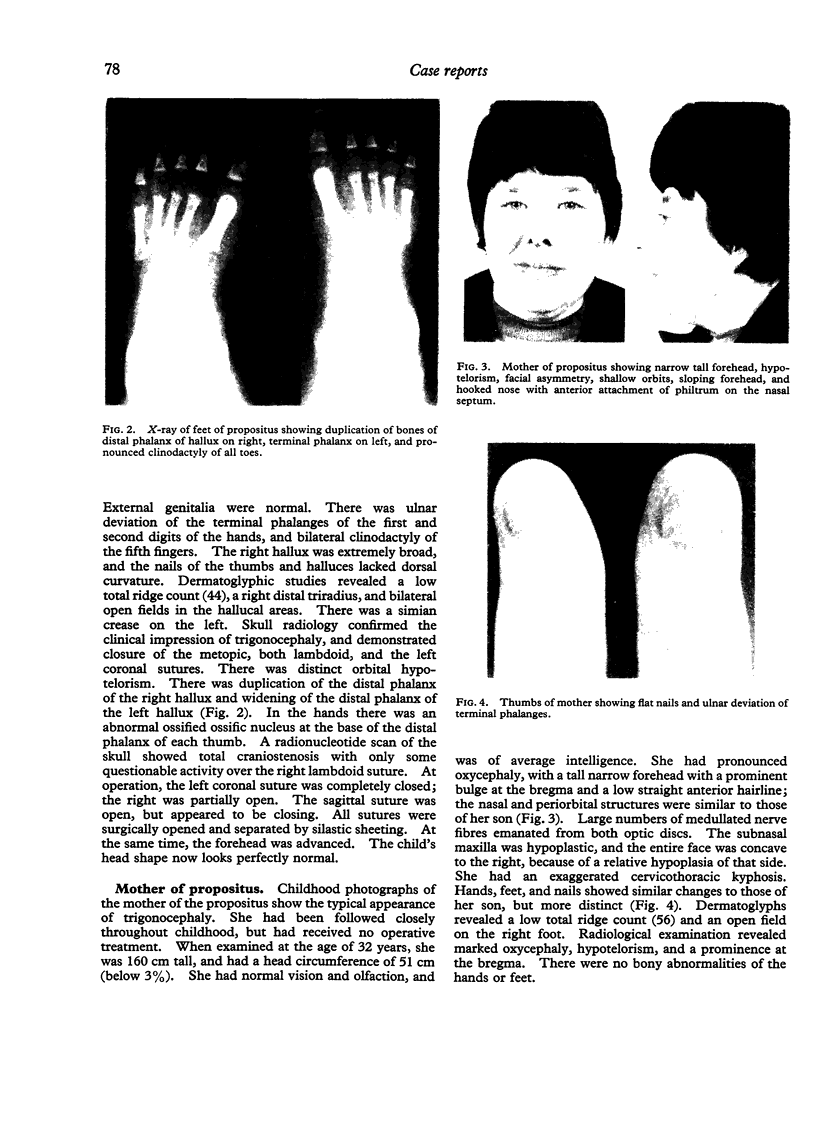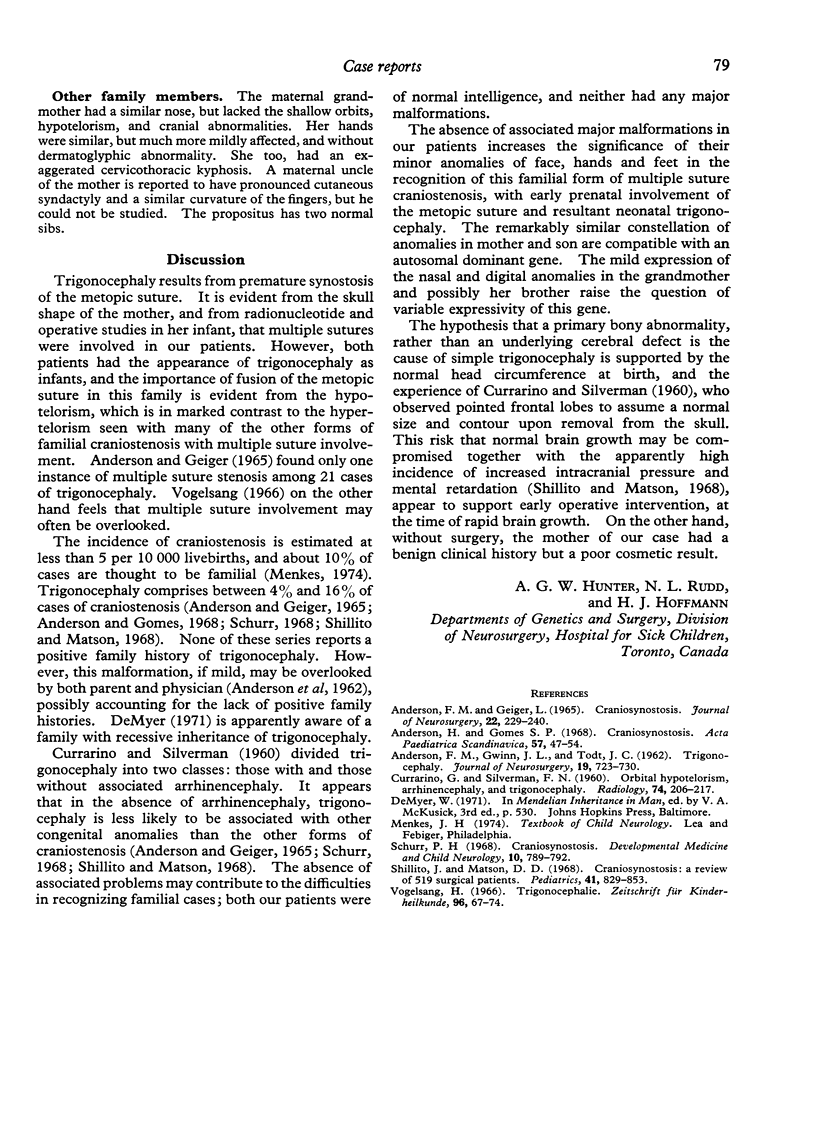Abstract
A mother and her son are described with neonatal trigonocephaly, multiple suture synostosis; shallow orbits; unusual nose; deviation of the terminal phalanges of fingers 1, 2, and 5; and broad toes which radiologically may show duplication of the terminal phalanx. Untreated, the condition leads to a disfiguring oxycephaly with hypotelorism. This appears to be the first documented instance of autosomal dominant trigonocephaly. The importance of the minor anomalies in its recognition and its good prognosis are emphasized.
Full text
PDF


Images in this article
Selected References
These references are in PubMed. This may not be the complete list of references from this article.
- ANDERSON F. M., GEIGER L. CRANIOSYNOSTOSIS: A SURVEY OF 204 CASES. J Neurosurg. 1965 Mar;22:229–240. doi: 10.3171/jns.1965.22.3.0229. [DOI] [PubMed] [Google Scholar]
- ANDERSON F. M., GWINN J. L., TODT J. C. Trigonocephaly. Identity and surgical treatment. J Neurosurg. 1962 Sep;19:723–730. doi: 10.3171/jns.1962.19.9.0723. [DOI] [PubMed] [Google Scholar]
- Andersson H., Gomes S. P. Craniosynostosis. Review of the literature and indications for surgery. Acta Paediatr Scand. 1968 Jan;57(1):47–54. doi: 10.1111/j.1651-2227.1968.tb07285.x. [DOI] [PubMed] [Google Scholar]
- CURRARINO G., SILVERMAN F. N. Orbital hypotelorism, arhinencephaly, and trigonocephaly. Radiology. 1960 Feb;74:206–217. doi: 10.1148/74.2.206. [DOI] [PubMed] [Google Scholar]
- Schurr P. H. Craniosynostosis. Dev Med Child Neurol. 1968 Dec;10(6):789–792. doi: 10.1111/j.1469-8749.1968.tb02980.x. [DOI] [PubMed] [Google Scholar]
- Shillito J., Jr, Matson D. D. Craniosynostosis: a review of 519 surgical patients. Pediatrics. 1968 Apr;41(4):829–853. [PubMed] [Google Scholar]
- Vogelsang H. Trigonocephalie. Z Kinderheilkd. 1966;96(1):67–74. [PubMed] [Google Scholar]






